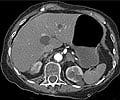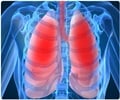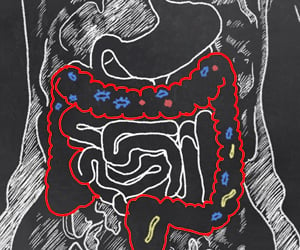A novel imaging study has indicated the potency of just a few puffs of cigarette that is capable of inducing strong cravings to continue smoking.
A novel imaging study has indicated the potency of just a few puffs of cigarette that is capable of inducing strong cravings to continue smoking. Researchers found that the amount of nicotine present in a single puff is capable of filling nearly 30% of the brain’s nicotine receptors and 3 puffs can occupy nearly 70% of these receptors. The smoker experiences the high of smoking when all the receptors are filled up. But this feeling of satisfaction lasts only for a short time. The cravings only increase with time which is why the smoker continues to feed those cravings and soon ends up smoking through out the day.
"Imaging studies such as this can add immensely to our understanding of addiction and drug abuse," says Elias A. Zerhouni, M.D., Director of the National Institutes of Health. "These findings suggest that drug therapies or vaccines for smoking cessation need to be extremely potent to compete with nicotine, which binds so readily to these receptors."The study is published in the August 2006 issue of the Archives of General Psychiatry.
"This study illustrates the powerfully addictive impact of even small amounts of nicotine. Every time a smoker draws a puff from a cigarette, they inhale numerous toxic chemicals that promote the formation of lung cancer, and contribute in a significant way to death and disability worldwide," says NIDA Director Dr. Nora D. Volkow. "Although many smokers endorse a desire to quit, very few are able to do so on their own, and fewer than half are able to quit long-term even with comprehensive treatment. This study helps explain why."
The scientists, led by Dr. Arthur Brody of the David Geffen School of Medicine at UCLA, used positron emission tomography (PET) to scan the brains of 11 smokers and assess nicotine distribution there. During the scanning sessions, the participants smoked one of five amounts--none, one puff, three puffs, one full cigarette, or until their craving was satisfied (2 and one-half to three cigarettes). Craving was measured with the Urge to Smoke scale, which assesses responses to 10 craving-related questions. The scientists also conducted magnetic resonance imaging (MRI) to help localize regions on the PET scans.
"We saw on our PET scans that the radiotracer 'disappeared' over time as the nicotine receptors became occupied by nicotine from cigarettes," says Dr. Brody.
The scientists found that the highest levels of nicotine binding occurred in the thalamus (a portion of the brain that acts as a conduit for all sensory information that reaches the brain's cerebral cortex, and which contains the highest concentration of these nicotine receptors), the brainstem (which controls various automatic functions, such as respiration, heart rate, and arousal), and the cerebellum (the portion of the brain responsible for the coordination of movement and balance). Results of another recently published NIDA-supported study suggest that a portion of the cerebellum called the vermis may be a key factor in modulating the brain's dopamine and reward systems, and may be more involved in drug abuse and addiction than previously thought.
"The central findings of the study suggest that typical daily smokers need to have these nicotine receptors almost completely saturated throughout the day, which drives the almost uncontrollable urge to keep smoking," says Dr. Volkow. "A more complete understanding of how nicotine affects the brain can help us develop better therapies for people looking to quit. In addition, since even low levels of nicotine exposure result in substantial occupancy of these receptors, additional research needs to address the impact of second-hand, or environmental, tobacco smoke on nicotine craving."











